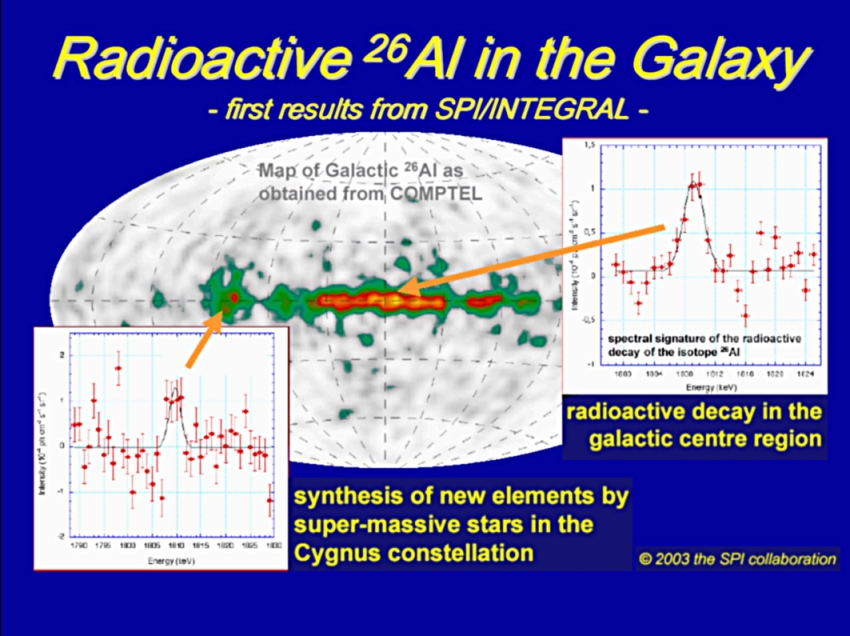
 Credit: SPI Collaboration; ESA
Credit: SPI Collaboration; ESA
Forging Aluminum
Chemical elements are formed in a variety of ways. Some, like 26Al, an isotope of aluminum, are only produced during stellar explosions. Thus the amount of this isotope acts as a tracer of how many stars have exploded. Because this isotope has a very short half-life (only a million years, the blink of an astronomical eye) it can help astronomers understand how many stars have exploded in the very recent past. For example, the surprisingly large amount of 26Al in interplanetary space may indicate that the solar system was rather recently bathed by the ejecta of a nearby stellar explosion (which would have have rather dramatic effects for life on earth). Now astronomers have a new tool to probe the amount of 26Al in the Galaxy. The INTEGRAL gamma-ray observatory is able to measure gamma-ray emission from the decay of 26Al using the SPI spectrometer. The image above shows a Gamma-ray map of the Galaxy (made by a predecessor of INTEGRAL, the COMPTEL detector on the Compton Gamma-Ray Observatory). Two bright regions of 26Al emission in the center of the Galaxy and in the Cygnus region have now been observed by SPI, and SPI has clearly detected the 26Al emission line (which can be seen in the insets). Eventually SPI will observe the entire Galactic plane and will provide astronomers with the best measure of recent nucleosynthesis yet obtained.
Last Week *
HEA Dictionary * Archive
* Search HEAPOW
* Education
Each week the HEASARC
brings you new, exciting and beautiful images from X-ray and Gamma ray
astronomy. Check back each week and be sure to check out the HEAPOW archive!
Page Author: Dr. Michael F. Corcoran
Last modified ¥


